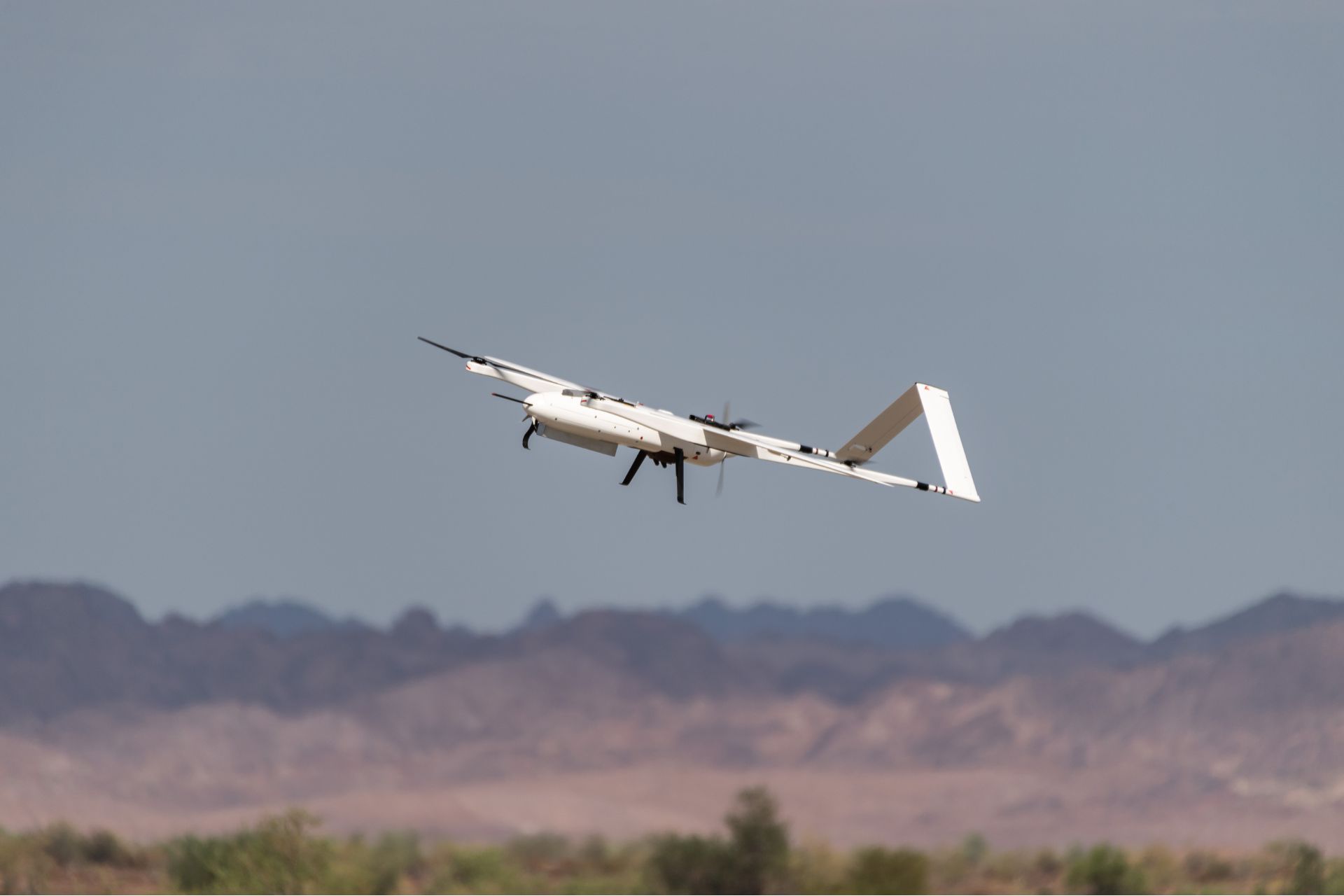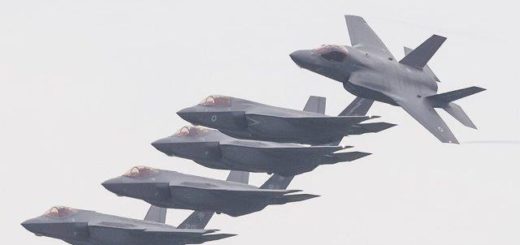Successful SWIFT Demonstration: Lockheed Martin and Altera Collaborate with OUSD to Shape Future of Electronic Warfare

{loadposition bannertop}
{loadposition sidebarpub}
On September 30, 2024, Lockheed Martin, in collaboration with Altera, a subsidiary of Intel, announced the successful flight demonstration of its 12th Generation (Gen12) electronic warfare transceiver, utilizing Altera’s Agilex 9 Direct RF FPGA. This project, named SWIFT (SHIP-enabled Wideband Transceiver Integrated Flight Test) by the Office of the Under Secretary of Defense for Research and Engineering (OUSD-R&E), set an ambitious goal to complete the demonstration within 12 months, using the transceiver aboard a Group 2 Unmanned Aerial Vehicle (UAV).Follow Army Recognition on Google News at this link
The collaboration between Lockheed Martin and Altera marks a critical step in integrating U.S.-manufactured semiconductors into key military systems (Picture source: Lockheed Martin)
Conducted at the U.S. Army’s Yuma Proving Ground, the SWIFT demonstration marked the first time Lockheed Martin employed Altera’s Direct RF FPGA in a government test environment. The test showcased Gen12’s electronic support (ES) capability by detecting, identifying, and locating enemy emitters in a relevant Department of Defense (DoD) environment. The success of this exercise demonstrated the potential of small, lightweight, and power-constrained airborne platforms to deliver electronic warfare effects, while allowing for future capability expansion. The technology enables a low-SWaP digital transceiver, aligned with the Sensor Open System Architecture (SOSA), capable of performing both electronic support (ES) and electronic attack (EA) missions using domestically produced semiconductors.
This demonstration also underscores the significance of the OUSD-R&E’s Heterogeneous Integrated Packaging (SHIP) program, which highlights the necessity of U.S.-made, durable microelectronics tailored to DoD applications. An event at Lockheed Martin’s renovated Global Vision Center in Crystal City, Virginia, celebrated the success of this demonstration and its potential impact on future defense programs. The event emphasized the capability of Altera’s MCP-2, along with its rapid integration into a UAV platform. Executives from Lockheed Martin, Altera, and OUSD-R&E discussed the importance of these advances for electronic warfare capabilities.
The collaboration between Lockheed Martin and Altera marks a critical step in integrating U.S.-manufactured semiconductors into key military systems. The SHIP program, aimed at developing cutting-edge, U.S.-made microelectronics, is essential to reducing reliance on foreign components and enhancing the security of electronic warfare missions. The SWIFT project, in particular, demonstrated the MCP-2 transceiver’s ability to deliver high performance in complex electromagnetic environments while maintaining a small physical footprint.
Strategic perspectives were also discussed during the event, where DoD officials and leaders from Lockheed Martin highlighted the role of next-generation microelectronics in future defense architectures. The partnership with Altera paves the way for broader adoption of these technologies within U.S. defense programs. The SHIP program remains critical to advancing DoD capabilities, ensuring that critical systems rely on locally manufactured semiconductor technologies.
The SWIFT project is part of a broader effort to ensure the rapid transition of these capabilities to military forces, with potential applications across various platforms. The technology developed could provide targeting information and situational awareness to allies, strengthening the operational effectiveness of U.S. military forces in future missions. Lockheed Martin plans to continue demonstrating the Gen12’s electronic support (ES) and electronic attack (EA) capabilities, aiming to integrate them into future DoD programs.
The SHIP program focuses on the development, delivery, and transition of microelectronics devices into DoD systems. In partnership with Altera, Lockheed Martin played a key role in integrating the MCP-2 device into electronic warfare applications through the STAMP (Stimulating Transition for Advanced Microelectronics Packaging) contract. This contract accelerated the transition of these capabilities to operational forces, paving the way for significant advancements in critical missions.
In conclusion, the success of the SWIFT demonstration highlights the importance of innovation in electronic warfare and microelectronics technologies for future defense capabilities. The Brakestop project, combined with the SHIP program, is opening the door to advanced electronic warfare architectures while ensuring the United States’ technological independence in key areas critical to national security. These developments will have lasting effects on how U.S. forces and their allies conduct defense operations in an increasingly complex and technologically advanced environment.

{loadposition bannertop}
{loadposition sidebarpub}
On September 30, 2024, Lockheed Martin, in collaboration with Altera, a subsidiary of Intel, announced the successful flight demonstration of its 12th Generation (Gen12) electronic warfare transceiver, utilizing Altera’s Agilex 9 Direct RF FPGA. This project, named SWIFT (SHIP-enabled Wideband Transceiver Integrated Flight Test) by the Office of the Under Secretary of Defense for Research and Engineering (OUSD-R&E), set an ambitious goal to complete the demonstration within 12 months, using the transceiver aboard a Group 2 Unmanned Aerial Vehicle (UAV).
Follow Army Recognition on Google News at this link
The collaboration between Lockheed Martin and Altera marks a critical step in integrating U.S.-manufactured semiconductors into key military systems (Picture source: Lockheed Martin)
Conducted at the U.S. Army’s Yuma Proving Ground, the SWIFT demonstration marked the first time Lockheed Martin employed Altera’s Direct RF FPGA in a government test environment. The test showcased Gen12’s electronic support (ES) capability by detecting, identifying, and locating enemy emitters in a relevant Department of Defense (DoD) environment. The success of this exercise demonstrated the potential of small, lightweight, and power-constrained airborne platforms to deliver electronic warfare effects, while allowing for future capability expansion. The technology enables a low-SWaP digital transceiver, aligned with the Sensor Open System Architecture (SOSA), capable of performing both electronic support (ES) and electronic attack (EA) missions using domestically produced semiconductors.
This demonstration also underscores the significance of the OUSD-R&E’s Heterogeneous Integrated Packaging (SHIP) program, which highlights the necessity of U.S.-made, durable microelectronics tailored to DoD applications. An event at Lockheed Martin’s renovated Global Vision Center in Crystal City, Virginia, celebrated the success of this demonstration and its potential impact on future defense programs. The event emphasized the capability of Altera’s MCP-2, along with its rapid integration into a UAV platform. Executives from Lockheed Martin, Altera, and OUSD-R&E discussed the importance of these advances for electronic warfare capabilities.
The collaboration between Lockheed Martin and Altera marks a critical step in integrating U.S.-manufactured semiconductors into key military systems. The SHIP program, aimed at developing cutting-edge, U.S.-made microelectronics, is essential to reducing reliance on foreign components and enhancing the security of electronic warfare missions. The SWIFT project, in particular, demonstrated the MCP-2 transceiver’s ability to deliver high performance in complex electromagnetic environments while maintaining a small physical footprint.
Strategic perspectives were also discussed during the event, where DoD officials and leaders from Lockheed Martin highlighted the role of next-generation microelectronics in future defense architectures. The partnership with Altera paves the way for broader adoption of these technologies within U.S. defense programs. The SHIP program remains critical to advancing DoD capabilities, ensuring that critical systems rely on locally manufactured semiconductor technologies.
The SWIFT project is part of a broader effort to ensure the rapid transition of these capabilities to military forces, with potential applications across various platforms. The technology developed could provide targeting information and situational awareness to allies, strengthening the operational effectiveness of U.S. military forces in future missions. Lockheed Martin plans to continue demonstrating the Gen12’s electronic support (ES) and electronic attack (EA) capabilities, aiming to integrate them into future DoD programs.
The SHIP program focuses on the development, delivery, and transition of microelectronics devices into DoD systems. In partnership with Altera, Lockheed Martin played a key role in integrating the MCP-2 device into electronic warfare applications through the STAMP (Stimulating Transition for Advanced Microelectronics Packaging) contract. This contract accelerated the transition of these capabilities to operational forces, paving the way for significant advancements in critical missions.
In conclusion, the success of the SWIFT demonstration highlights the importance of innovation in electronic warfare and microelectronics technologies for future defense capabilities. The Brakestop project, combined with the SHIP program, is opening the door to advanced electronic warfare architectures while ensuring the United States’ technological independence in key areas critical to national security. These developments will have lasting effects on how U.S. forces and their allies conduct defense operations in an increasingly complex and technologically advanced environment.





